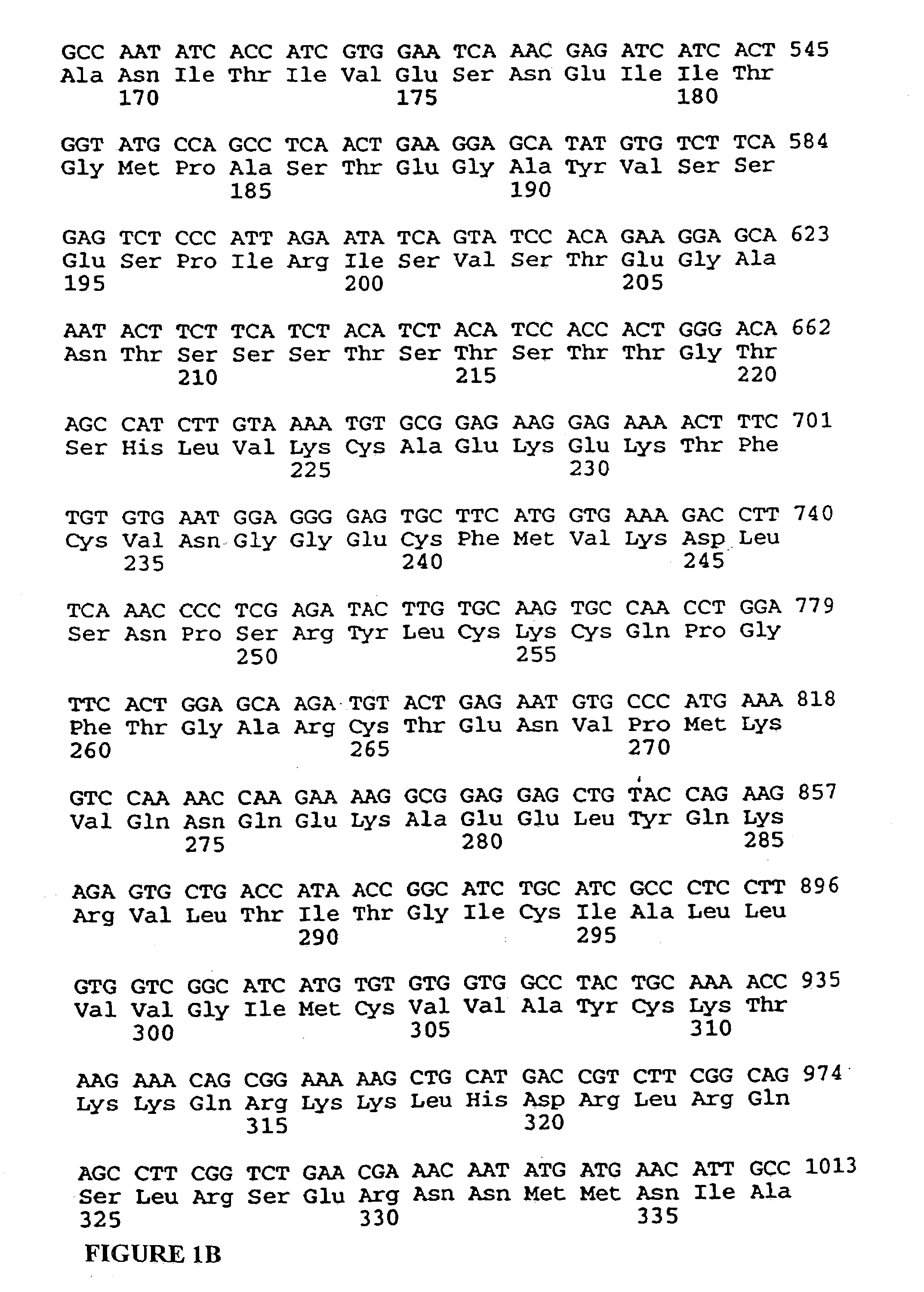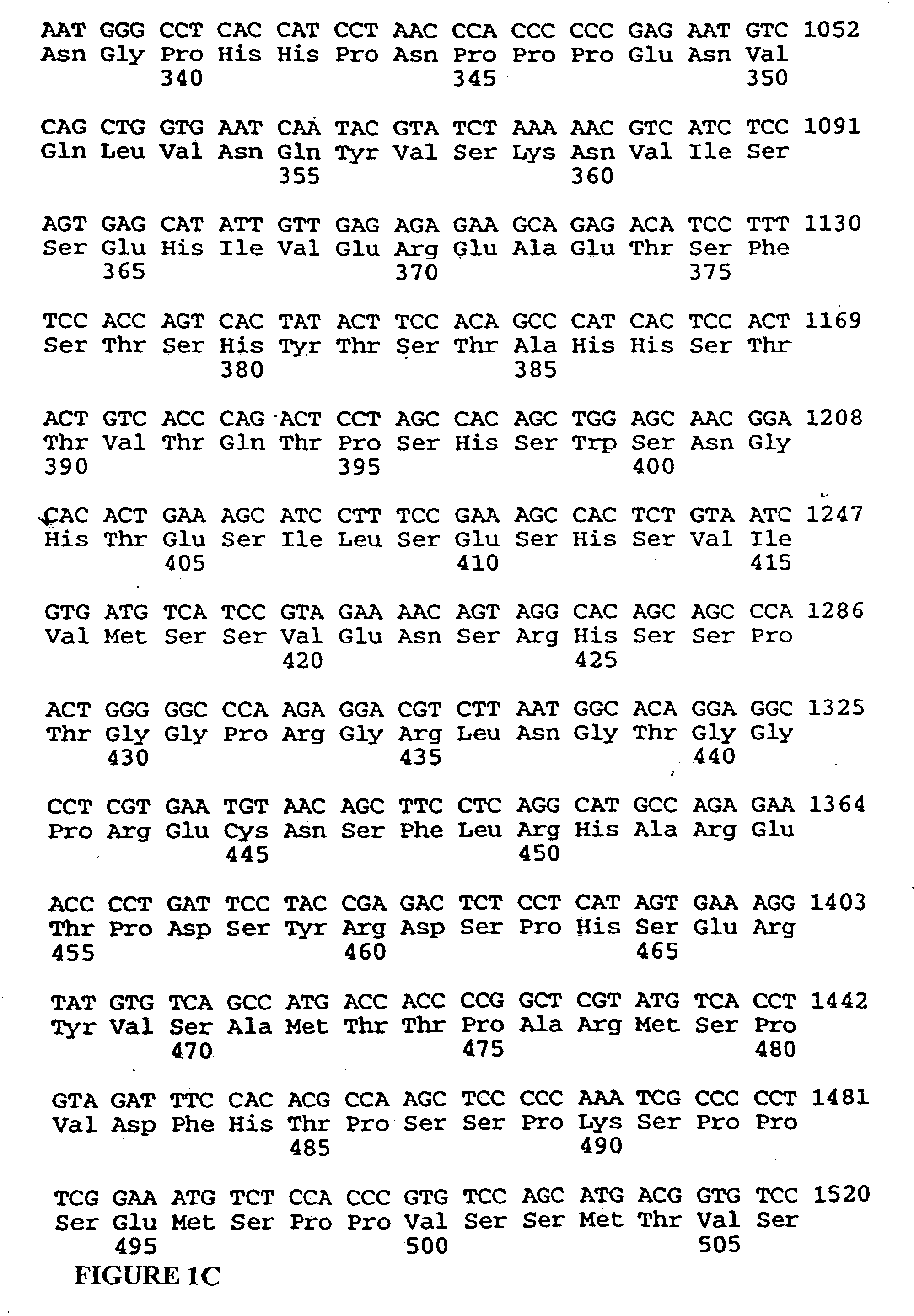Use of heregulin as a growth factor
a growth factor and heregulin technology, applied in the field of her2, her3 and/or her4 ligands, can solve the problems of early efforts to select high affinity fusion phages, and achieve the effects of regenerating and/or repairing epithelial cell injury, stimulating growth and proliferation of epithelial cells, and stimulating epithelial cell growth and proliferation
- Summary
- Abstract
- Description
- Claims
- Application Information
AI Technical Summary
Benefits of technology
Problems solved by technology
Method used
Image
Examples
example 1
Preparation of Heregulins
[0307](a) Heregulins HRG-α, HRG-β1, HRG-β2, HRG-β2-like, and HRG-β3 were isolated, cloned, expressed and isolated from the cell culture medium as described in U.S. Pat. No. 5,367,060.
[0308](b) SMDF polypeptides are prepared as described in WO 96 / 15244.
[0309](c) γ-HRG polypeptide was prepared and characterized as described below.
[0310]Reagents: The EGF-like domain of HRGβ1(177-244) was expressed in E. coli, purified and radioiodinated as described previously (Sliwkowski et al. J. Biol. Chem. 269:14661–14665 (1994)). The anti-HER2 monoclonal antibodies 2C4 and 4D5 have been described elsewhere (Fendly et al. Cancer Research 50:1550–1558 (1990)).
[0311]HER3 and HER4-immunoadhesins: A unique MI I site was engineered into a plasmid expressing human IgG heavy chain at the region encoding the hinge domain of the immunoglobulin. MI I sites were also engineered into a set of HER expression plasmids at the region encoding the ECD / TM junctions of these receptors. All mu...
example 2
HER2 / HER3 Expression in Embryonic Rat Lung
[0334]Rat lungs were microdissected from rat embryos on embryologic day (E) 16, 18, 20, and post-natal (P) days 7, 14, and adult. Isolated lung tissue was homogenized in a standard protease inhibitor buffer, and equal protein amounts subjected to SDS-PAGE (4–20%), blotted to nitrocellulose and identified with specific antibodies (HER2, HER3, HER4-Santa Cruz Biological, San Jose, Calif. and HRG, 3G11, Genentech, Inc.) using chemiluminescent techniques.
[0335]Analysis of the blot indicates that HER2 is expressed at high levels throughout development in utero, appears to peak on E18 and declines after birth to lower adult levels. HER3 expression peaks at E18, and then declines after birth to lower adult levels. HER4 is not identified at any time during lung development. A proform of HRG may be present (75 kDa protein) on E16, peaking on E18 and then declining to low levels in the adult. These data suggest that the HER / HRG system is developmental...
example 3
HER2 / HER3 Expression in Fetal Human Lung
[0336]Fetal human lung was obtained from mid trimester embryos (17–22 weeks). Lung tissue was cultured in serum free Weymouth's media at an air fluid interface at 37° C. in a humidified 5% CO2 atmosphere. Tissue was harvested from the culture on days 0 (day tissue was received) and after 14 days (D) in culture (D1–D4), homogenized in a standard protease inhibitor buffer, equal protein amounts subjected to SDS-PAGE (4–20%), blotted to nitrocellulose and identified with specific antibodies.
[0337]HER2 is expressed on D0 and increases in expression level during in vitro culture. HER3 is present at low to undetectable levels at D0 and increases in expression level during in vitro culture. HER4 was not identified at any time during lung development. HRG was not identified on D0, however, it was identified as a 75,000 Da protein on D1–D2 and continued to rise in expression level throughout time in culture. This human explant model recapitulates part ...
PUM
| Property | Measurement | Unit |
|---|---|---|
| birth weights | aaaaa | aaaaa |
| temperature | aaaaa | aaaaa |
| ionic strength | aaaaa | aaaaa |
Abstract
Description
Claims
Application Information
 Login to View More
Login to View More - R&D
- Intellectual Property
- Life Sciences
- Materials
- Tech Scout
- Unparalleled Data Quality
- Higher Quality Content
- 60% Fewer Hallucinations
Browse by: Latest US Patents, China's latest patents, Technical Efficacy Thesaurus, Application Domain, Technology Topic, Popular Technical Reports.
© 2025 PatSnap. All rights reserved.Legal|Privacy policy|Modern Slavery Act Transparency Statement|Sitemap|About US| Contact US: help@patsnap.com



